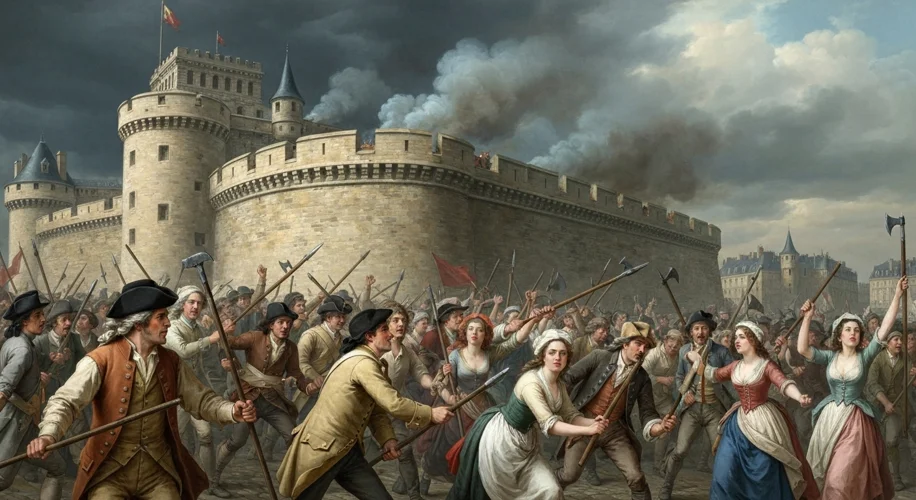The year is 1789. Paris simmers, a city choked by poverty, yet buzzing with the uncontainable energy of discontent. For decades, the iron fist of absolute monarchy, embodied by Louis XVI and his extravagant queen, Marie Antoinette, had ruled France. Yet, beneath the gilded veneer of Versailles, a nation starved. Bread prices soared, taxes crushed the commoners, and the ideals of liberty, equality, and fraternity whispered in salons and secret meetings began to take root.
The air crackled with a tension that could only lead to one thing: upheaval. The Estates-General, a medieval assembly meant to advise the king, had been called for the first time in 175 years, only to be dismissed by the king. This act of defiance by the Third Estate – the commoners who made up 97% of the population – ignited the fuse. They declared themselves the National Assembly, vowing to draft a constitution for France.

Then came July 14th. The Bastille, a medieval fortress and a hated symbol of royal tyranny, stood as a grim monument to oppression. Rumors of the king amassing troops to crush the burgeoning revolution fueled the frenzy. Thousands of Parisians, armed with pikes, axes, and a burning desire for change, marched on the Bastille. The ensuing clash was brutal, a desperate fight for freedom against a rigid, outdated regime. When the dust settled, the Bastille had fallen, its stones a testament to the people’s will. This act, more than any other, became the potent symbol of the French Revolution.
The revolution, however, was far from a unified march towards democracy. It was a tempestuous, often bloody affair, marked by the passionate, and sometimes terrifying, oratory of figures like Maximilien Robespierre. As the monarchy was dismantled, and Louis XVI and Marie Antoinette eventually met their ends at the guillotine – a starkly efficient symbol of the revolution’s radical turn – France plunged into a period known as the Reign of Terror (1793-1794). Under the Committee of Public Safety, led by Robespierre, thousands deemed ‘enemies of the revolution’ were executed. It was a time when revolutionary fervor morphed into paranoia, and the pursuit of an ideal republic led to the suppression of dissent.
Key figures emerged from the crucible of revolution. Georges Danton, a charismatic orator, initially championed the cause but later fell victim to the Terror. Jean-Paul Marat, a radical journalist, stirred the masses with his inflammatory writings. Each had their vision for France, their own loyalties and their own fears. The revolution’s trajectory was a dizzying carousel of shifting alliances and escalating extremism.
The consequences of the French Revolution rippled far beyond France’s borders. It dismantled the feudal system, abolished aristocratic privileges, and championed the concept of citizenship over subjecthood. The Declaration of the Rights of Man and of the Citizen proclaimed universal rights, influencing democratic movements for centuries. Yet, the violence and instability it unleashed also paved the way for the rise of Napoleon Bonaparte, whose military campaigns would reshape the map of Europe.
Analyzing the French Revolution is to grapple with the intoxicating, yet dangerous, power of ideals. It demonstrated how deeply ingrained social injustices can ignite a conflagration, and how the pursuit of liberty, when unchecked by reason and moderation, can descend into tyranny. The echoes of ‘Liberté, Égalité, Fraternité’ continue to resonate, a powerful reminder of humanity’s eternal struggle for justice, and the profound, often perilous, transformations that can arise when the people decide they have had enough.

